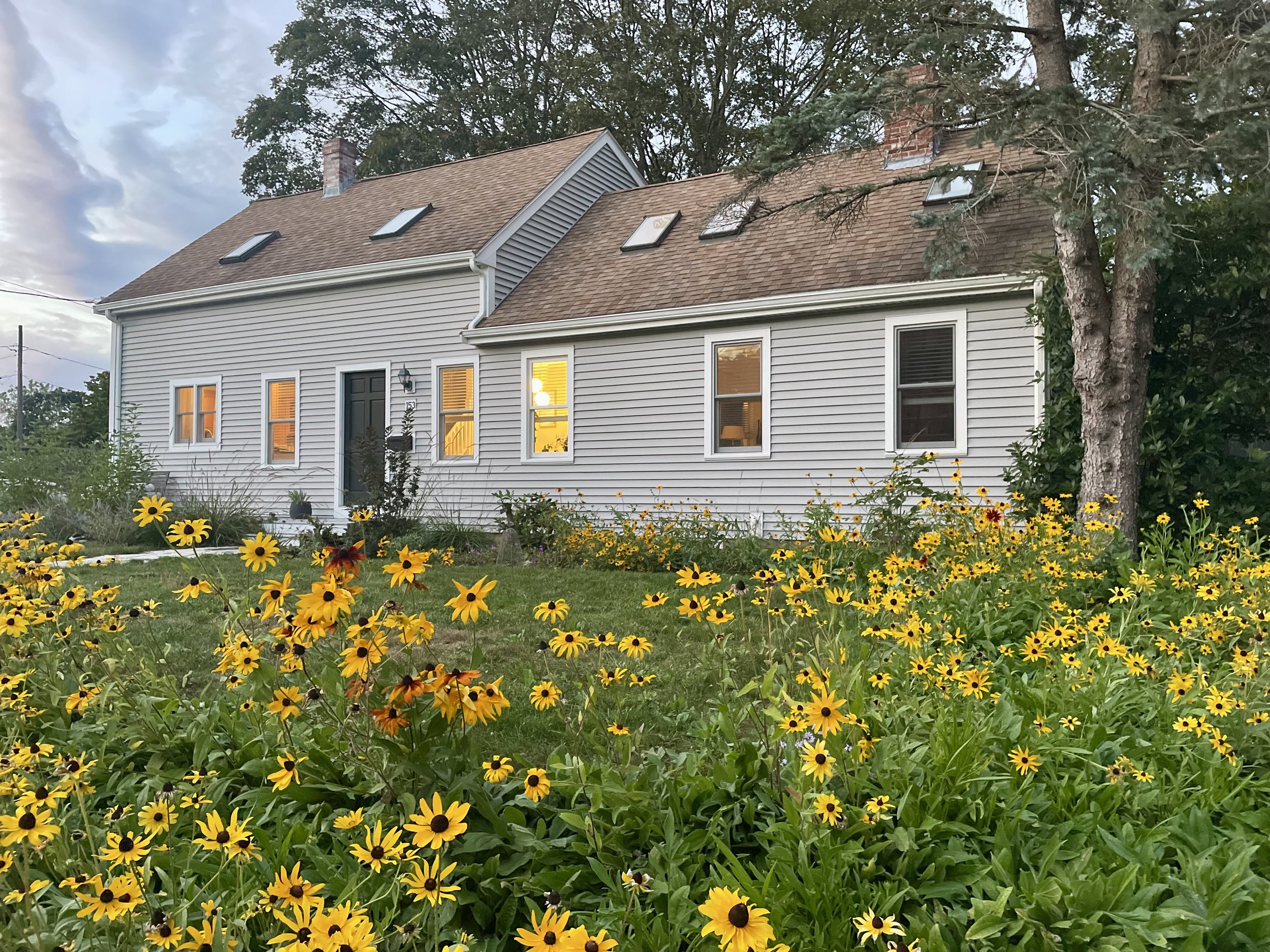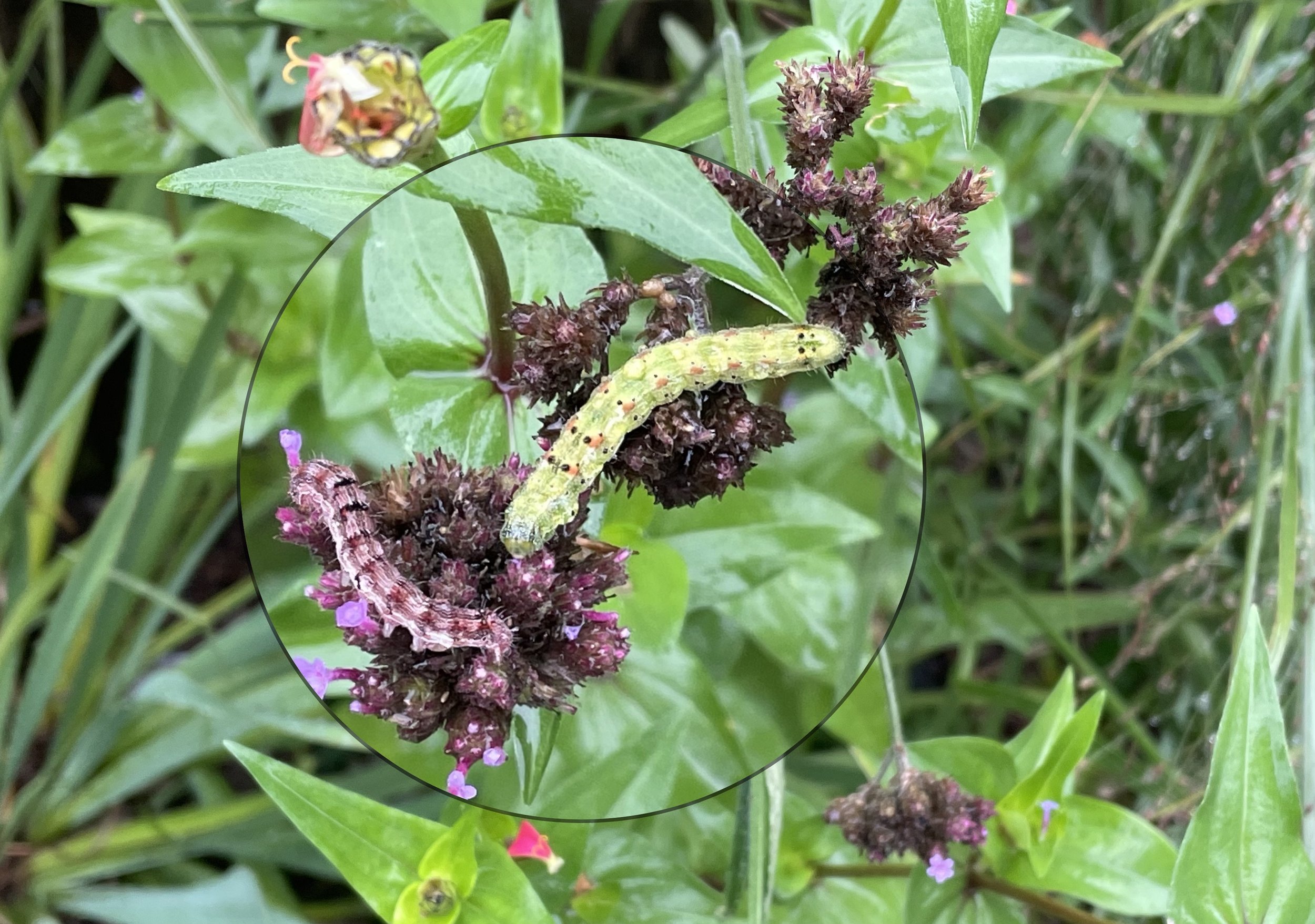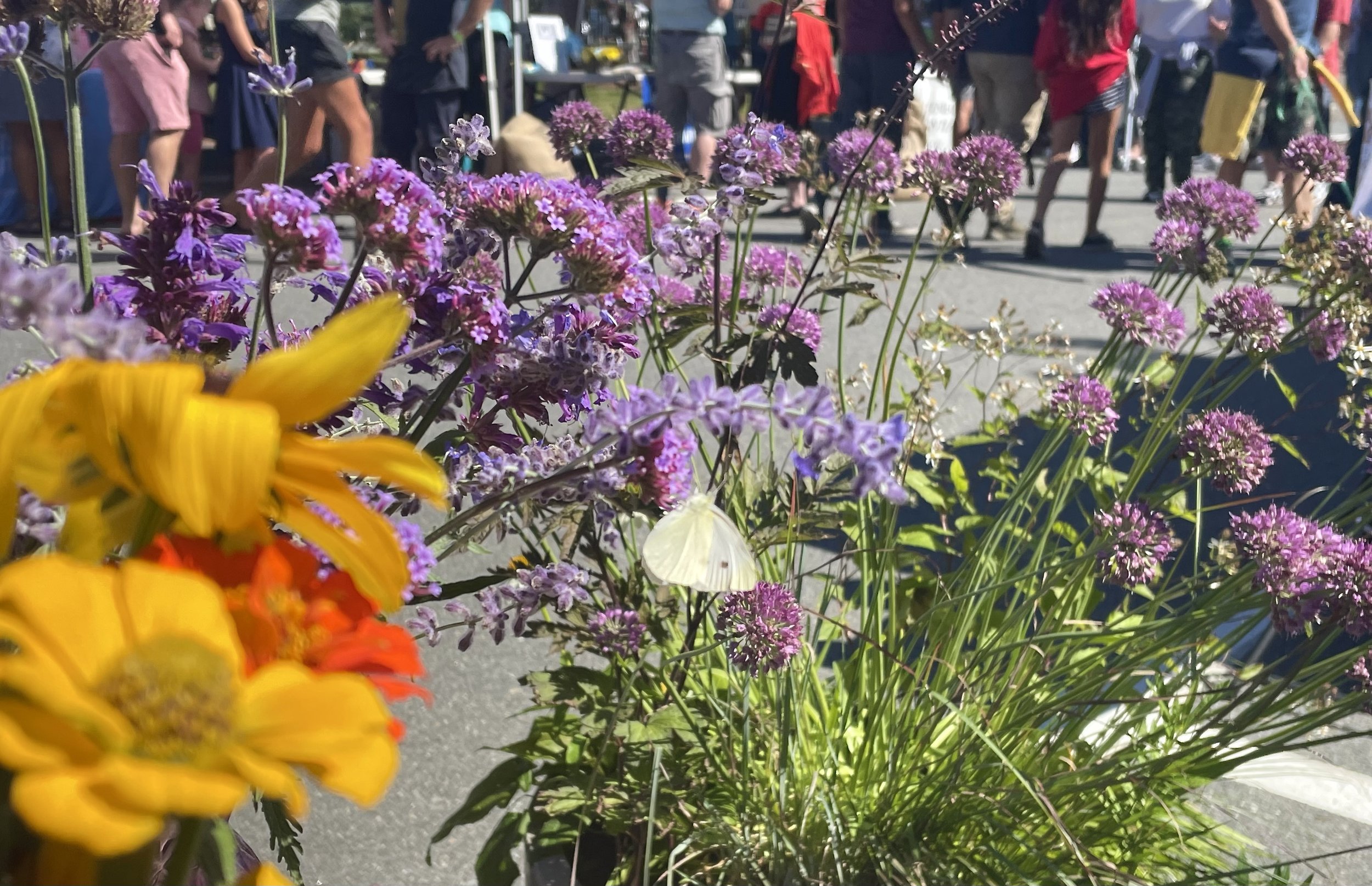Fall “clean up”
With cooler night-time temperatures and some falling leaves it’s starting to feel more like fall than summer. My front gardens are still super colorful with lots of new flower buds, not much to do here but watch for pollinators and think about future design opportunities.
My side garden is less tidy. Verbena, hyssop and swamp milkweed have been flopping over into the driveway, echinacea is past, some things I’d like to move or divide. So here I have some choices…
Choices - cut back or not, move or not, dead-head or not, divide now or wait?
Before answering this lets pause and ask ourselves - What is the goal of this garden? Is the goal to support all pollinators, support butterflies, to be beautiful, to block the view of something, or something else altogether? If the exclusive goal is to create and maintain habitat for pollinators then the answer to most of the above questions is do nothing. Do nothing because this space is home to the creatures you’re attracting with native plants. Many of these creatures will be here all winter and you don’t want to take their home away or bag them up and send them to the town compost pile. When we tidy too much we are disrupting - at some level - so if you know what the goal of your garden is then you can feel comfortable with your gardening choices. This is how it works at my house.
It is my goal to support butterflies - that is my primary focus. My secondary goal is that my gardens compliment my new home and are an example of good design dispelling the myth that native plant gardens are messy. Some of my spaces have names like butterfly garden, asters and goldenrods, work in progress and woodland garden. Naming my garden beds helps inform my choices.
In my butterfly garden there is still a lot of activity as you can see from the above picture. I am minimizing the what I do here. Activity as we are approaching fall…
dead-head salvia to encourage more flowers.
dead-head about 1/3 of echinacea to encourage more flowers (saving some for the goldfinches), store seed heads for planting in new gardens.
cut back stems of hyssop and milkweed that are leaning so far into the driveway that I can’t open the car door. cut milkweed gets put behind the other plants in case there are monarch eggs/caterpillars on it.
take out black-eyed Susan’s here - too much with all the others planted on the front and side gardens; put pretty container in front of bare spot.
cut seed heads from Verbena hastata and swamp milkweed. dry and give away.
cut most zinnia’s and bring inside…not liking the vibe here but know they are great nectar plants so not removing just yet
pull spent Cleome and compost
This is all I will do through fall. When we get closer to winter I will re-space the grasses and consider putting raised beds in the mini meadow in the back. Everything else I will leave until spring unless it falls into the driveway.
This is a chart I am working on that says which butterflies in Massachusetts overwinter and in what stage (adult, egg, caterpillar or pupa). I highlighted what species I see in my gardens and put extra effort into being hands off around their host plants.
I read a lot about “ecological gardening” and how to help support insects with our gardening actions. The most scientific advice on how to do this (that I’ve seen) is in Heather Holm’s book, Pollinators of Native Plants.
General guidelines for fall clean up.
dead-heading - selectively if you’d like to save seed, yes if you do not want this plant to spread, no if you want to feed the birds
cut backs - in the spring if you can wait that long (until we have 5 consecutive days of 50 degree weather)
divisions - okay once heat of the summer is past, best if it is something that has already gone dormant. if your plant isn’t dormant (like warm season grasses and perennials) consider waiting closer to winter
moving - wait a little longer if plant is still in flower, fine if plant is already dormant, consider waiting until spring if it is a host plant
If you’d like this advice personalized for your gardens book a coaching session here…
Thank you to everyone that stopped by my booth this past weekend at Hamilton’s Fall Festival. I enjoyed meeting you all and talking about gardening to support butterflies. If you have any questions at all please don’t hesitate to get in touch.





